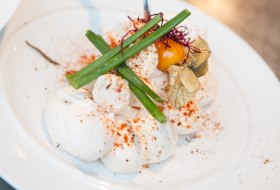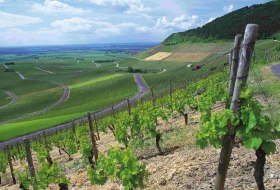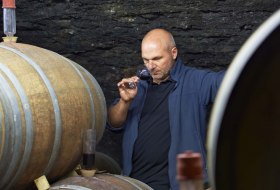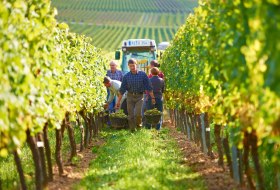
searchMenu



An "evergreen" among the Rheinhessen "small dishes for wine". It can be found as a specialty on almost all menus of wine taverns or "Straußwirtschaften". The Spundekäs consists of cream cheese (soft cheese), refined with salt, pepper, red pepper and onions, it is served with dry bread or savory biscuits (especially Brezels). The original shape was that of a tapered, turned barrel stopper (which closed the bunghole of the wine barrel). In Rheinhessen, it is called "Fassspundloch", where the name of the Spundekäs comes from. Click…

Rheinhessen expression for an extremely dry wine (= as dry as dust). Similar to Forzdrogge.

(German: Dienstleistungszentrum Ländlicher Raum Rheinhessen - Nahe - Hunsrück) Abbreviation DLR. Based in Oppenheim. Founded on July 31, 1895 as "Großherzoglich-Hessische Wein- und Obstbauschule" (Grand Ducal Hessian Wine and Fruit School). The DLR is a public service institution with a focus on education (»Vocational school«: up to the master's examination, as well adult education through wine seminars), environment-oriented viticulture, experiments, questions of limiting quantities and rationalization in the vineyard, new methods of…

Stick in the vineyard made of wood, metal (galvanized steel), plastic or concrete. Between the sticks, the wires are stretched, to which the vine shoots are attached.

In a Rheinhessen "Straußwirtschaft", the winemaker sells the wines he produces by the glass. He may do so after prior notification for a maximum of four months in one year. These four months can also be divided into two periods. The food served must be simpe and easy to prepare (and preferably mach the wine). Ususally, a Straßwirtschaft can be ientified by a wreath or a bunch of flowers (German: Strauß") and a blackboard. It is not known, for how long Straußwirtschaften have been existing already. In a script by Publius Syrus from…

Widespread Rheinhessen wine measure. A "Stückfass" is a wooden barrel, that holds 1200 l (also half stück, quarter stück).

Tannins occur mainly in the grape stems, the seeds and the skins. The pulp does not contain tannin. White wines contain no tannins, as the grapes are pressed immediately, so that the tannin has no time to pass from the solid ingredients to the must. Therefore, the occurrence of tannin is limited to the red wines. However, the grape varieties are relevant for the tannin content.

This refers to the unity between vineyard (geological component), microclimate, grape variety and winemaking in each winery (= natural and human factors), which defines the wine.

In September and October the grapes are harvested. Nowadays, much of the work is done by the grape harvesters. Among others, Beerenauslese, Trockenbeerenauslese, and Selection Rheinhessen wines are still harvested by hand.

Natural non-alcoholic fruit juice preserved by certain processes (unfermented grape must). It is intended for direct consumption, not for wine production and must be labeled as grape juice. Vintage or grape variety information is permitted. Increasing demand is causing a higher production. While a few years ago, there was no demand for grape juice, this has changed and led to many Rheinhessen winemakers also offering grape juice. Grape juice is nutritious, healthy (cure) and mixed with water refreshing, which makes it the perfect drink for…